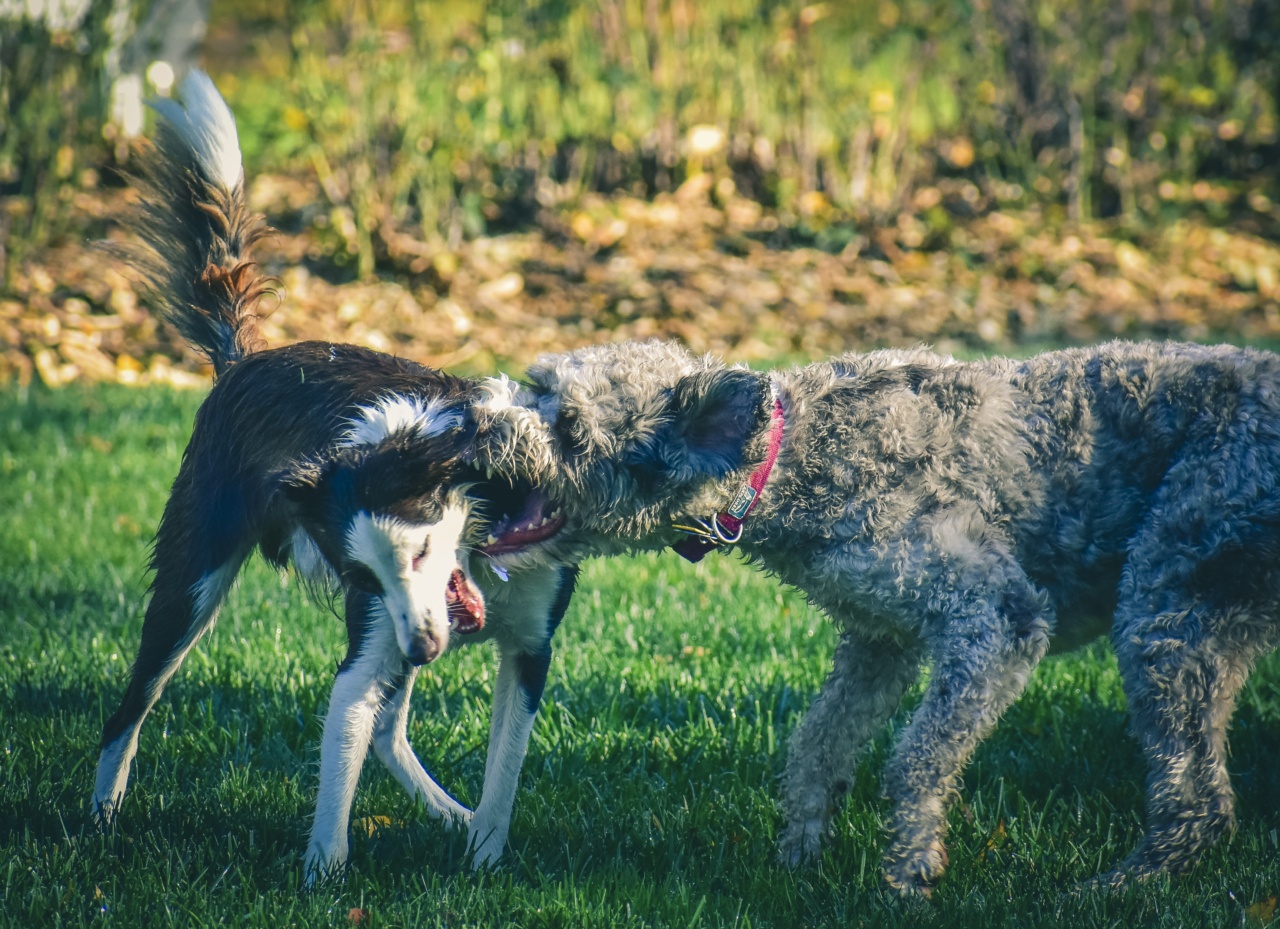Aggression in dogs can be a serious problem and may put the owners, other people, and pets in danger.
It is important to understand that aggression is a natural behavior in dogs, and it can occur due to various reasons, including fear, territorial instincts, resource guarding, and medical issues. It is necessary to modify the dog’s behavior to avoid injuries and accidents. This article will discuss how to modify aggressive dog behavior.
Understanding the Type of Aggression
The first step in modifying the dog’s behavior is to identify the type of aggression. Different types of aggression require different approaches to modification. Here are the most common types of aggression in dogs:.
Fear Aggression
Dogs may become aggressive when they are afraid or anxious. Fear aggression is the most common type of aggression in dogs. In this case, the dog may show signs such as growling, barking, snarling, and biting.
Fear aggression can be triggered by various things, including loud noises, unfamiliar people or animals, and stressful situations. It is essential to identify the triggers and avoid them if possible.
Territorial Aggression
Dogs may become aggressive when they feel that their territory is being threatened. This type of aggression is common in dogs that are not socialized properly or those that have been trained to guard property.
Signs of territorial aggression may include growling, barking, snarling, and biting. It is important to establish clear boundaries for the dog and teach them to respect other people’s property.
Resource Guarding
Dogs may become aggressive when they are trying to protect their food, toys, or other possessions. This type of aggression is known as resource guarding.
Dogs may show signs such as growling, snarling, and biting when they feel that their possessions are being taken away. It is important to teach the dog that it is okay for people to approach their possessions and that they will not be taken away.
Redirected Aggression
Redirected aggression occurs when a dog is unable to attack the object of their aggression, so they attack another person or animal instead.
This type of aggression may occur when the dog is on a leash or behind a fence and cannot reach their intended target. It is important to keep the dog away from situations that may trigger the aggression and to avoid punishing the dog for redirected aggression.
Medical Issues
Sometimes, aggression in dogs may be caused by an underlying medical issue. Pain, discomfort, and neurological problems may cause dogs to become aggressive.
It is important to take the dog to a veterinarian to rule out any medical issues that may be causing the aggression.
Modifying Aggressive Behavior
Once the type of aggression has been identified, it is important to take the necessary steps to modify the dog’s behavior. Here are some ways to modify aggressive dog behavior:.
Socialization
Socialization is essential for all dogs, especially those that are prone to aggression. Socialization helps dogs to become comfortable and confident around people, animals, and new situations.
It is important to expose the dog to different situations and people from an early age to prevent fear and aggressiveness. The dog should be taught to interact politely with other dogs and people.
Training
Training is another essential aspect of modifying aggressive dog behavior. The dog should be taught basic obedience commands such as sit, stay, come, and leave it.
The dog should also be taught to walk on a leash without pulling and to behave politely when meeting other dogs and people. Positive reinforcement training techniques such as clicker training and treat training can be very effective in modifying aggressive behavior.
Avoid Reinforcing Aggressive Behavior
It is essential to avoid reinforcing aggressive behavior. This means that the dog should not be rewarded for growling, barking, snarling, or biting.
Owners should avoid comforting the dog when it is showing signs of fear or aggression as it can reinforce the behavior. Similarly, punishment such as physical abuse or yelling can cause the dog to become more aggressive.
Seek Professional Help
If the aggression is severe or the dog has a history of aggression, it is recommended to seek professional help. A professional dog trainer or behaviorist can assess the dog’s behavior and create a customized behavior modification plan.
They can also teach the owners how to modify the behavior effectively and safely.
Medical Treatment
If the aggression is caused by an underlying medical issue, it is important to seek medical treatment. The veterinarian may prescribe medication or recommend other forms of treatment to address the medical issue and reduce the aggression.
Conclusion
Aggressive behavior in dogs can be modified through socialization, training, avoiding reinforcing aggressive behavior, seeking professional help, or medical treatment.
It is important to identify the type of aggression and take the necessary steps to modify the behavior to prevent injuries and accidents. With the right approach and consistent training, even aggressive dogs can become well-behaved pets.





























